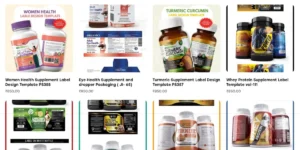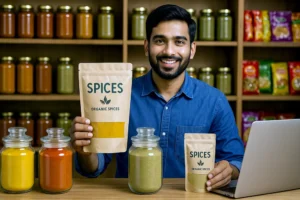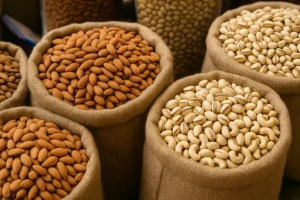FMCG Printing & Packaging: What, How & Why Explained
Introduction
Walk through any supermarket aisle and you’ll see rows of colorful, well-designed products vying for attention. For FMCG brands, printing and packaging aren’t just about wrapping products — they’re a critical part of marketing, compliance, and consumer experience.
In this guide, we’ll explore what FMCG printing & packaging is, how it works, and why it matters for your business growth.
What is FMCG Printing & Packaging?
FMCG (Fast-Moving Consumer Goods) printing & packaging refers to the design, printing, and production of packaging for products that sell quickly at relatively low cost — like snacks, beverages, toiletries, and cleaning supplies.
It serves three key purposes:
- Product Protection – Prevents contamination, damage, and tampering.
- Brand Communication – Displays brand identity, product details, and legal information.
- Shelf Appeal – Attracts customers in competitive retail spaces.
How FMCG Printing & Packaging Works
1. Market & Brand Analysis
- Study target customers and competitors.
- Choose brand colors, typography, and key messages.
2. Design & Artwork Development
- Create front, back, and side panel designs.
- Ensure compliance with labeling laws (e.g., FSSAI in India).
3. Material Selection
- Flexible packaging: Plastic films, foils, laminates.
- Rigid packaging: Cartons, glass bottles, tin cans.
4. Printing Techniques
- Flexographic Printing – Best for large runs, cost-effective.
- Gravure Printing – High-quality, detailed images.
- Digital Printing – Short runs, customization.
- Offset Printing – Ideal for cartons and paper-based packaging.
5. Finishing & Converting
Lamination, embossing, foil stamping, die-cutting, varnishing.
6. Quality Assurance
Check print clarity, seal strength, and barcode readability.
Why FMCG Printing & Packaging Matters
1. Boosts Brand Recognition
A unique design helps customers spot your product instantly.
2. Increases Sales
Up to 70% of purchase decisions are made in-store — packaging plays a huge role.
3. Ensures Safety & Compliance
Protects against contamination and meets legal standards.
4. Supports Marketing
Festive designs, limited editions, and QR codes can drive engagement.
5. Improves Logistics
Barcodes and batch codes make inventory management easier.
Trends in FMCG Printing & Packaging
- Sustainable Materials – Eco-friendly films, recycled paper.
- Smart Packaging – QR codes, NFC tags for interactive marketing.
- Minimalist Designs – Clean typography, simple layouts.
- High-Barrier Films – Extends product shelf life.
Tips for Businesses
- Understand your audience before designing.
- Follow all compliance guidelines.
- Focus on clarity, not clutter.
- Pick the right printing method for your scale.
- Test packaging in real-world conditions.
Conclusion
In FMCG, printing & packaging is more than just covering a product — it’s a powerful marketing, compliance, and branding tool. A well-executed packaging strategy can turn browsers into buyers and keep your brand top-of-mind.
FAQs
Q1: Which printing method is most used for FMCG?
A: Flexographic printing, due to its speed and cost efficiency.
Q2: Is eco-friendly packaging worth it?
A: Yes — it improves brand image and meets rising consumer demand.
Q3: Can small brands access premium packaging?
A: Absolutely — digital printing allows for smaller, high-quality runs.







